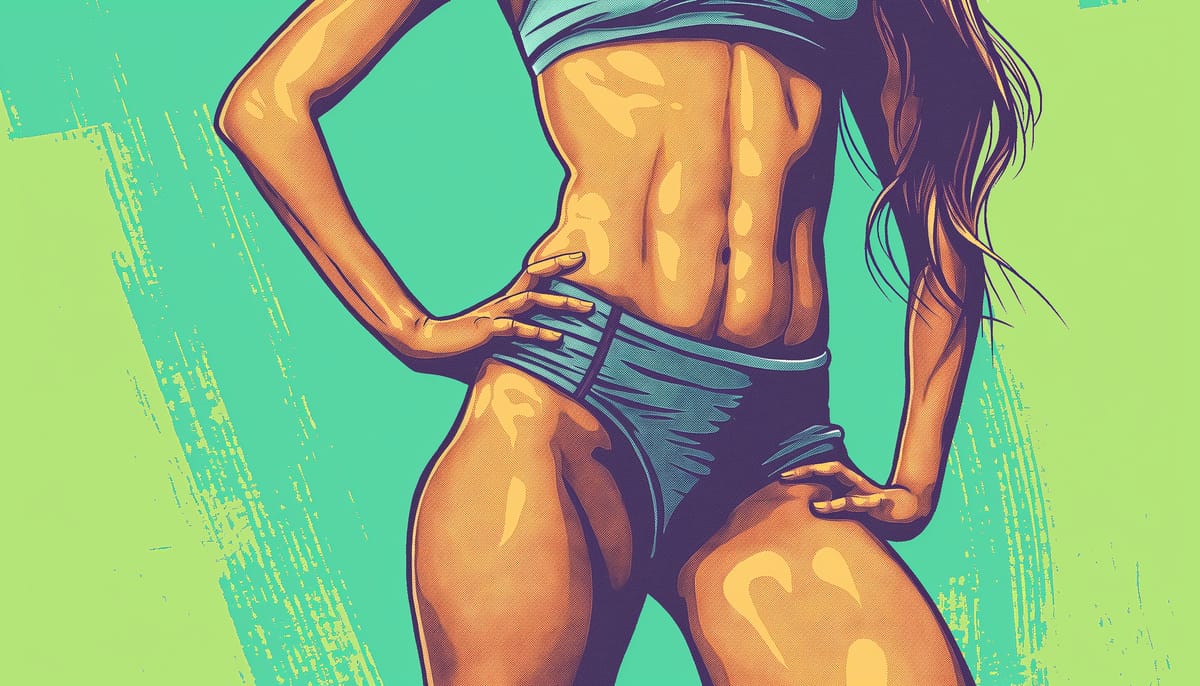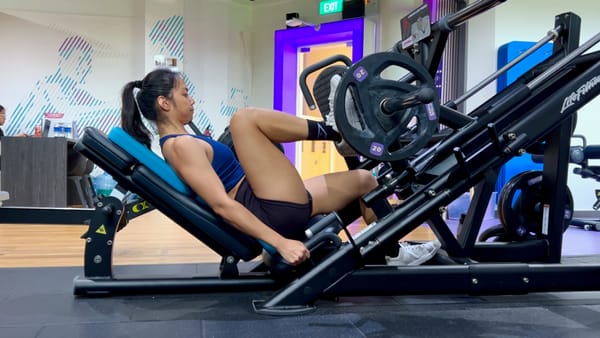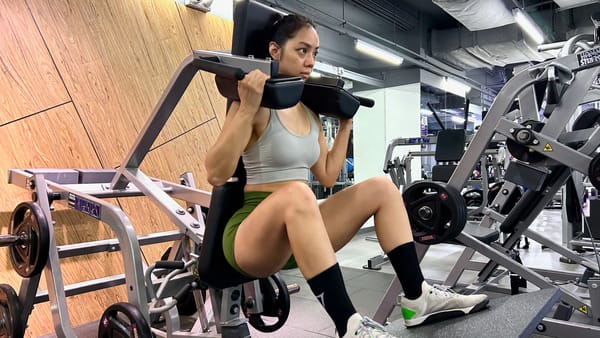How to Get a Smaller Waist: What You Should and Shouldn’t Do
A step-by-step breakdown on how to get a smaller waist. Science-backed, realistic, and sustainable strategies only. No BS, no woo-woo.

Women with small waist sizes are more attractive.
Let’s be honest: we’re all aware of this perception to some extent — whether we care to admit it or not. It’s out there.
So, it really shouldn’t be all that surprising to learn that countless studies over the years have indeed consistently linked a slim waist to increased female attractiveness.
Now, before you despair, you don’t have to want a teeny tiny waist!
Your body = your goals. You should do what makes you happy.
But if bringing in the waistline happens to be one of your goals, you should learn what’s possible and what you can reasonably do to see results.
In this article, we’ll show you how to get a smaller waist naturally (no scary rib removal surgeries or invasive fat-sucking procedures) and safely, potentially helping you:
How to get a smaller waist
Here’s how to get a smaller waist naturally:
- Lose fat around your midsection and/or*
- Build more muscle on your shoulders, back, and glutes
*You can choose to do only 1, but doing both would typically help you see better and quicker results.
Lose overall body fat
Wait a minute. Didn’t we just say you needed to lose fat around the midsection?
Why is the wording now “Lose overall body fat?”
Answer: because, unfortunately, you cannot selectively lose fat from a specific body part or area.
Spot reduction is a myth.
And that’s why losing overall body fat is the only way you’d lose fat around the midsection naturally.
As for how you can lose overall body fat, it ultimately comes down to a calorie deficit — i.e., eating fewer calories than your body burns.
How much fewer, you ask?
Well, a realistic and sustainable rate of weight loss for most people is 0.5% to 1% of body weight weekly.
So if you currently weigh 60 kg, that’ll translate to a loss of 0.3 to 0.6 kg in the first week.
Then, to get an estimate of the calorie deficit you’d need to make that rate of loss possible, you could use a calorie calculator (such as this) that’ll show you the calories you should eat to lose, for example, 0.25, 0.5, or 1 kg weekly based on your:
- Age
- Gender
- Height
- Weight
- Activity level
Let’s work through an example together.
For a 30-year-old female who weighs 70 kg, has a height of 171 cm, and exercises 4 to 5 times weekly, the calorie calculator estimated that she’d need to eat 1,636 calories daily to lose 0.5 kg weekly (~0.7% of her current body weight).
Since her maintenance calories are estimated to be 2,136, that’s a 500-calorie deficit.
Tips on achieving and sustaining a calorie deficit
Woah. 500 calories?
Of course, depending on your statistics and physical activity levels, exactly how many fewer calories you’ll need to eat to lose overall fat (reminder: necessary for anyone who wishes to learn how to get a smaller waist) could be lower or higher than that.
Still. The principles of achieving and sustaining a calorie deficit are the same.
Build your diet around whole, minimally processed foods
These include high-fiber starchy carbohydrates (e.g., potatoes and brown rice), fruits, vegetables, and a variety of protein foods (more on this below).
Limit your consumption of ultra-processed foods — think potato chips, ice cream, and instant soups — as they often offer little nutritional value yet are loaded with fat, sugar, and calories in general.
Worse still, despite the massive amounts of calories they provide, ultra-processed foods suck at satisfying your hunger.
Meaning? They’re all too easy to overeat.
Prioritize lean protein intake
Protein is the most satiating macronutrient.
It’ll help you feel fuller quicker and keep food cravings away for longer.
That said, be careful about your protein sources.
Choose lean options over fatty protein sources whenever possible.
Fat contains a whopping 9 calories per gram; in a protein source, you want most of your calories to come from protein instead of fat.
Good examples of lean protein sources include white-fleshed fish, lean beef, skinless white meat poultry, soy, and plain Greek yogurt.
Stay physically active throughout the day
Solely relying on a reduction in food intake to hit your target calorie deficit can sometimes be challenging.
You could give yourself a greater “calorie allowance” by increasing your physical activity levels either through:
- Exercise, such as cardio and/or strength training, or
- Simply moving around more throughout your day (e.g., fidgeting, cycling to the grocery store, and random housework — these all count toward your “non-exercise activity thermogenesis” or NEAT levels).
A word of caution if you’re mainly relying on exercise to create a calorie deficit..
Research shows that some people may “compensate” and “eat back” the calories burned.
So, to prevent yourself from negating exercise’s effects, monitor your food intake.
Make sure you’re not eating more than you should.
You don’t want to do all the exercise and still remain as far away from your desired calorie deficit as ever.
Monitor your weight loss rate
We’ve always been careful to say that the calorie calculator we’ve linked to (and, in fact, this applies to any calorie calculator or equation out there) will only provide estimates of your calorie requirements for maintenance, weight gain, or loss.
That’s because 100% accurate equations for resting metabolic rate and total daily energy expenditure don’t exist.
But that’s OK.
You don’t need to work with bang-on calorie estimates to see progress; stick with the estimated calorie intake needed to lose X amount of weight for a week, then check how much weight you’ve lost.
If you’ve lost less than expected, drop your calories by maybe 100 calories.
And if you’ve lost more than expected, do the opposite: increase your calories by maybe 100 calories.
Then, once again, monitor your weight loss and adjust your calorie intake from there.
Build more muscle on your shoulders, back, and glutes
How to get a smaller waist? Lose overall fat. This is a no-brainer.
But build more muscle on the shoulders, back, and glutes? How would that help you get a smaller waist?
Well … it’s all about creating an illusion.
Someone with a greater contrast between their waist and their:
- Upper body and
- Hips
… will always look like they have a tinier waist than someone with a smaller contrast — even if they have the same waist size.
Working on increasing this contrast brings you closer to the much-coveted hourglass shape.
Besides, when you’re in a calorie deficit, building muscle gives you a better chance of maintaining a smaller waist long-term.
That’s because when you’re in a calorie deficit and don’t do any strength training, your body tends to lose weight from muscle instead of fat.
This could negatively impact your metabolism (i.e., lower it since muscle mass burns more calories than fat). And worse, it increases your likelihood of regaining the lost fat since muscle mass is key for appetite regulation (and you now have less of it).
But, of course, you can’t simply snap your fingers and hope that you’ll magically pack on muscle mass on your shoulders, back, and shoulders. (If only!)
Instead, you’ll have to strength train consistently.
Here are a few tips to get you started:
What you shouldn’t do for a smaller waist
Remember:
- Lose overall fat, so you lose fat around your midsection and/or
- Build more muscle on your shoulders, back, and glutes.
These are the 2 things you should do for a smaller waist.
But what about things you absolutely shouldn’t do?
Here are 5 prime examples:
Abs exercises, 24/7
Five words: spot reduction is a myth.
Unless you pair abs exercises with an appropriate calorie deficit, you’re unlikely to get a smaller waist. You might even end up sabotaging yourself since certain abs exercises, especially oblique exercises, could add bulk (muscle mass) to your waist. Eek.
Do cardio and cardio only
Thinking of running/cycling/swimming/[add your choice of cardio] your way to a smaller waist?
Hate to burst your bubble, but a large body of evidence shows that cardio alone just isn’t very effective for fat loss.
Instead, you’d typically see greater chances of fat loss success by combining calorie restriction with a suitably high protein intake and exercise.
Wear waist trainers
To keep this short … there's simply no scientific evidence that waist trainers actually contribute to weight loss (i.e., they won’t help you with getting a smaller waist).
Take fat-burning supplements
As with waist trainers, there is no solid scientific evidence that fat-burning supplements work, particularly in the long term.
Also, given the unregulated nature of supplements, you never really know what you’re putting in your body, e.g., dangerously high levels of caffeine, heavy metals, or worse.
Go on restrictive or “special” diets
These diets tend to keep your daily calories super low (typically 800 to 1,200).
So, obviously, you’d lose weight and get a smaller waist as a result. But how long would you be able to stand eating so few calories? A few weeks? Months? Now, imagine what happens as soon as you revert to your old eating habits.
Set reasonable expectations
Getting a smaller waist shouldn’t come at the expense of your mental and physical health.
Always set realistic expectations of how much you can reduce your waist size.
After all, the smallest your waist can naturally become depends on the shape and size of your ribs – something that cannot be changed.
It’s also important to recognize that there’s a limit to how much body fat you can safely lose.
As always, take the time to consult a medical professional for advice before starting.
Focus on how to get a smaller waist and keep it
Remember, if you want to get (and maintain) a smaller waist, stick with methods that work and are safe. They might sound boring or tedious, but at least there are no false promises.
Steer clear of methods that are extreme, unsustainable, or plain woo-woo.
At best, they’re a waste of your time and money. At worst, they’re harmful to your health and well-being.
Learn how to adopt healthy habits that’ll help you make gradual but sustainable progress to your goal waist size. This way, you’ll actually get to keep your waist size for the long term and even reap the associated health benefits.





